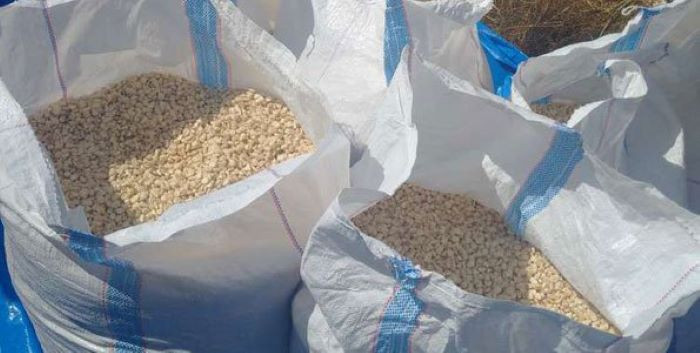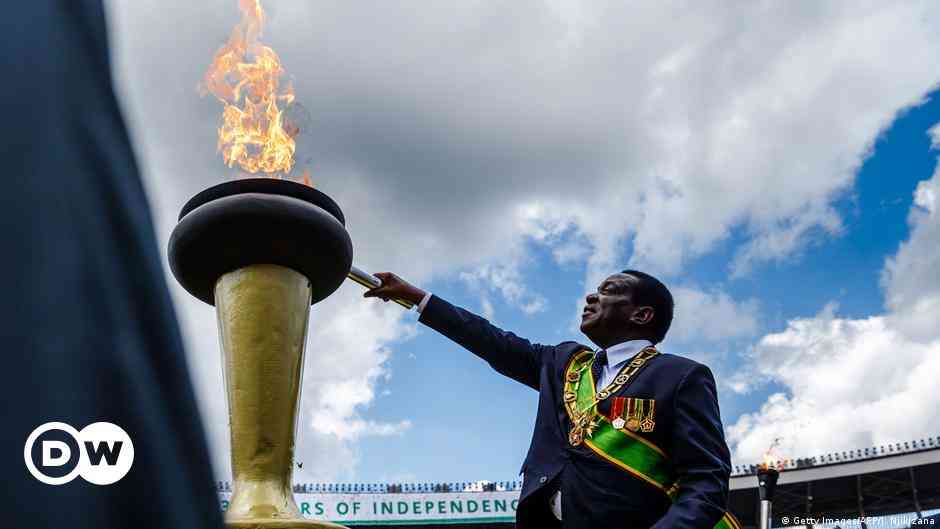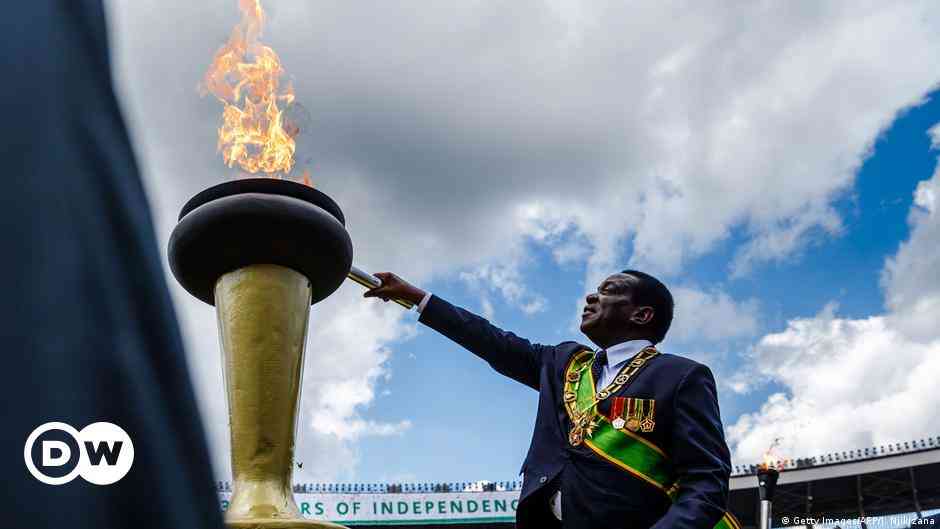
THREE official documents published in recent weeks paint a different, but fundamentally depressing pictures of Zimbabwe’s economy. All pose more questions than answers, leaving readers to ponder the meaning as well as the motivations underlying these assessments.
The first – a brief end-of-mission report by the International Monetary Fund (IMF) team that assessed the Staff-Monitored Programme (SMP) – comes closest to telling it how it really is. Since it was no more than a gloomy media statement, only when it is fleshed out in a published report, will it be possible to pass judgment.
The SMP published in May was very optimistic. The targets – unambitious as they are – were never likely to be achieved. The increase in government employment costs was going to be kept to 18%, reserve money growth to 10%, with real gross domestic product (GDP) expected to decline only 2,1%. All have been missed and IMF officials who in May put the odds of success at more than 50%, now apparently suggest that the completion odds have slumped to 15%.
Since that prediction, government has gone against IMF advice in tightening currency and exchange controls with a series of confused and contradictory measures, including criminalising some foreign currency dealings. In the process, Finance minister Mthuli Ncube’s already-tarnished reform credentials have been left in tatters.
Quite what IMF executive board members make of this, we will probably never know, but someone should be asking questions about the IMF’s “culture of optimism”. Should the fund staff try harder to get their projections more accurate rather than playing to their client’s gallery?
Perhaps, the assessment when published will inject the necessary realism, but don’t hold your breath.
At the other end of the scale is the second document – the Treasury’s Pre-Budget Strategy, replete with unrealistically optimistic forecasts, based on a combination of political opportunism and dubious, if not nonsensical, economics.
The figures are plucked out of cyberspace, asking readers to believe that an economy in which investment will average a mere 6,5% of GDP over the next three years, will grow at an average of (also) around 6,5%. In other words, one dollar of investment will produce another dollar of growth in real GDP.
- Chamisa under fire over US$120K donation
- Mavhunga puts DeMbare into Chibuku quarterfinals
- Pension funds bet on Cabora Bassa oilfields
- Councils defy govt fire tender directive
Keep Reading
Normally, the relationship – capital-output ratio – is around four, meaning that a country needs to invest $4 million to grow GDP by $1 million. In Zimbabwe, after decades of underinvestment in plant, machinery, infrastructure and human capital, one would expect the ratio to be well above four.
The strategy document forecasts year-end monthly inflation at 10% falling to a monthly increase of 2,3% by end 2020.
The impossibility of forecasting monthly inflation in 16 months’ time to one-tenth of a percentage point will not be lost of serious analysts. In effect, Treasury officials are saying: “We are not to be taken seriously.”
Nor should they, especially since the team responsible for the forecast is the same one that a year ago promised 22% average inflation in 2019, now adjusted to 150% or so, and real GDP growth of over 3%. In the event, every single one of the Treasury’s published budget highlights for 2019 has been missed.
Ncube has banned the official publication of annual inflation figures on the grounds that they are misleading which, given the plethora of misleading forecasts that he has produced in just one year in office, is deeply ironic.
The strategy puts 2019 GDP growth at -6,5% which is a great deal more realistic than its earlier forecast of minus 2,1% in the SMP, but still probably short of the mark. Nominal GDP estimated at some $93 billion in the SMP is raised to $114 billion. In 2020, it will grow 4,6% in real terms and 84% in nominal terms, meaning that inflation will average at least 75% next year.
Real GDP seldom grows when inflation exceeds 30% to 40% a year, which is another solid reason for questioning the growth forecasts. Official optimism is based on better rainfall, recovery in aggregate demand and improved macroeconomic stability and foreign currency availability.
Significantly, the word investment is not mentioned. Perhaps Treasury really believes that economies grow without investment?
Internal inconsistencies abound. GDP is forecast to grow 4,6% while imports – in United States dollars – rise only 5,5%. Given the degree to which growth in 2019 has been constrained by forex shortages, the numbers do not add up.
The “improvement” in the balance of payments – from a deficit on current account of US$1,4 billion in 2018 to $238 million this year and only $11 million in 2020 is the assumed product of import compression and a modest recovery in exports, underpinned by US$1,4 billion in humanitarian assistance and diaspora remittances. This, of course, is no platform for the promised upper middle-income economy in a decade’s time.
The strategy claims that the economy has been strengthened by what it calls “mono currency reforms”. Quite how the current contradiction-ridden system qualifies as a mono currency is not clear. Upwards of 40% of bank deposits are held in foreign currencies – a rough measure of dollarisation. The proportion was a mere 3,6% at the start of the year, suggesting re-dollarisation rather than a mono currency.
Then there is the official insistence that a growing variety and number of official transactions must be carried out in US dollars. The energy regulator, Zera, publishes official prices, using two different exchange rates – a subsidised one for the cost of fuel imports and a market one for Zimra fuel duty. A mono currency with multiple and arbitrary exchange rates? Quite interesting!
Although there is no objective evidence to prove it, the reality is that employees would far rather be paid in foreign currency than the local currency. All of which means that the frequent references to mono currency have more to do with propaganda than economic reality.
The strategy refers to improved macro-economic stability – an assessment starkly at odds with 300% annual inflation and 93% currency devaluation. It falls back on GDP ratios to justify the claim that the fiscal situation is on the mend, but yet again, the reality is very different.
In the budget, a year ago, spending was put at $8,2 billion, of which half was for employment costs and a quarter for what Treasury likes to call “capital expenditure”, which includes handouts for Command Agriculture, which are subsidies not investment. All of these were stated as US dollars, which as since conceded in the SMP, they were not.
A year later spending, revenue and the deficit have more than doubled in Zimbabwe dollars, but as a ratio of GDP the deficit has declined enabling the authorities to claim that the fiscal balance has improved. Since the forecast GDP is no more than a shot in the dark based on inflation numbers which the Finance minister says are misleading anyway, this is just another very dubious claim.
The third document – the World Economic Forum’s Global Competitiveness Report – makes unhappy reading for different reasons.
The country, ranked 127 out of 141 economies, remains stuck close to the foot of the league table where it has been for 20 years. With a score out of 44,3 out of a possible 100, Zimbabwe is slightly below the average for sub-Saharan Africa as a whole and behind eight Sadc member States.
Those who believe that it makes sense to try and maintain the local currency at par with the rand need to reconcile this proposal with the yawning gap between South Africa’s ranking (60th) in the Global Competitiveness table and Zimbabwe’s position of 127.
Strikingly the country scores best in the realm of private sector activity and worst where the State is in control. The country is ranked bottom of the class (141) for trade openness, 138 for labour market flexibility, 137 for property rights, 134 for public sector performance and 133 for corruption.
On the upside, it is in the top half of countries ranked for reliance on professional management, willingness to delegate, entrepreneurial culture and attitudes towards risk, and the strength of auditing and reporting standards. It is in the top half also for the impact of organised crime and incidence of terrorism.
A recurrent theme of the report is the need, globally, for a shift from monetary easing – lower interest rates, credit creation and quantitative easing – towards fiscal and structural reforms that will foster increased investment in both tangible and intangible capital with the aim of increasing equality, raising productivity and combatting climate change.
In a country where policymakers and some business leaders focus on production as distinct from productivity, these are crucially important messages for all stakeholders. Some, at least, appear to be getting the message. The pre-budget strategy helpfully draws attention to low productivity in agriculture with maize yields one tonne per hectare for maize against 2,5 tonnes in Zambia and five or more in South Africa. Perhaps Command Agriculture is not all it is made out to be?
The three reports demonstrate that – two years on – the New Dispensation is a busted flush. Few outside the magic circle of Zanu PF heavyweights, President Emmerson Mnangagwa and Ncube apologists and the State media, believe the promises of reform, sustained growth, middle-income status by 2030, “value preservation”, as memorably promised eight months ago by the Reserve Bank of Zimbabwe governor John Mangudya, and a new “real” currency in just six weeks’ time.
The reality – growing unemployment and poverty, plummeting living standards, falling real wages, declining capacity utilisation, a collapsed currency, the world’s highest inflation rate, Africa’s worst performing economy in terms of 2019 GDP growth and the world’s third worst after Venezuela and Iran – is light years away from the official narrative.
These are deep-seated structural problems that will not be resolved by the Transitional Stabilisation Programme (TSP), especially one that went off the rails months ago. This is acknowledged at the end of the pre-budget strategy which promises two five-year development plans targeting the unreachable upper middle-income status by 2030.
Hopefully, the planners will learn from their mistakes in successive budgets and the TSP. The present is a time for sober realism, especially as the global economy slips back into recession, but that is in short supply in contemporary Zimbabwe where planning is driven by political opportunism, fiscal policy by vote-buying and economic policy by 1970s economic theology.
Tony Hawkins is a retired professor of economics. He writes in his personal capacity











